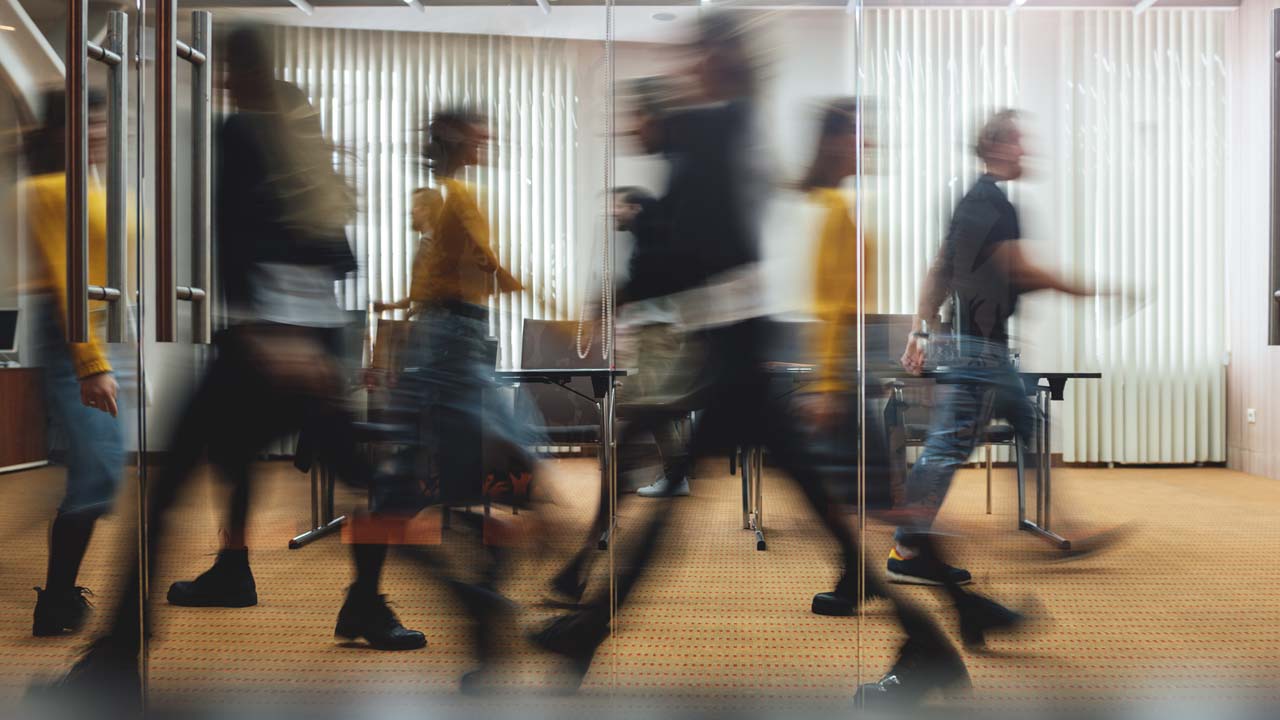Over the years, consumer behaviour has demonstrated that it can change fast. Add the pandemic and rapid advances in online technology and it can be hard to keep up with.
We take a look at the evolving behaviour of consumers through the online decision process.
Key Points
- Today, most consumers get their first exposure of a brand or product on a screen
- The zero moment of truth (ZMOT) means more opportunities – if discovered
- In the past, companies didn’t have so many avenues of influence
- Technology and online resources are increasingly important in the finance space
- Mistakes are easy to make, but can be easy to fix
- The science behind online consumer behaviour reveals some interesting points
Consumer behaviour overview
Today, the vast majority of consumers have first exposure to a brand online. This means that instead of hearing about a product or service from a friend or seeing it in real life in a brick and mortar store, they’ll see images or videos online first.
This is often on social media but can also be a link from a friend, a digital ad, or through email marketing. This is the stimulus stage.
Next is what Google coined as the ‘Zero Moment of Truth’ stage. The zero moment of truth (ZMOT) is the discovery and awareness stage.
For example, a consumer sees an eye-catching image on social media and opens the link, then is interested enough to search for more information.
Most consumers won’t open a new link and instantly make a purchase. Instead, they’ll view the advertisement, then do their own research and finally (hopefully), make a purchase.
In other words, the zero moment of truth means doing your own research prior to the seller’s knowledge and with other resources.
For example, if you’ve shopped for a new laptop, you may have taken the time to Google options and read the accompanying reviews prior to making a purchase/talking to the seller – that’s the ZMOT process.
High quality online exposure across multiple platforms – social media, website, email, etc. is key.
Comparing the ‘old days’ shows things have changed.
Before everyone had instant access to online research and social media, first exposure typically happened in print media, TV, or in a brick and mortar store.
For example, when a consumer first encountered a product in a display case or saw an ad in a newspaper or magazine.
This was often referred to as the first moment of truth and it meant consumers were influenced by fewer channels of exposure, but brands had less chances of persuasion.
Marketers had less avenues of exposure to play with, but more control.
The takeaway was that consumers would use their senses to analyse products and services themselves to decide whether or not to make a purchase.
The statistics behind consumer behaviour today
- 81% of all purchases start with consumers searching online
- 9 million (82% of) Australian households shopped online in 2020
- 85% of consumers conduct research online prior to purchasing
- In Australia, 1 in every 3 minutes online is spent on social media
- There are around 30% more mobile connections than there are people in Australia
- 93% of online experiences begin with a search engine
What it means for financial services
Financial services are no exception when it comes to the need for high quality, instant online access.
A recent survey conducted by PWC Australia found that 69% of surveyed respondents believe the most up to date technology is an important factor in choosing a bank or financial product – 45% say that this will only become more important in the future.
Furthermore, 78% of respondents said that they trusted PayPal to keep their money safe.
With figures like the above, consumers are demanding, trusting and relying on technology for their financial needs.
Competition, traditionally focusing on rates and customer service, is also beginning to include technology delivery. Similarly to the auto industry, a high level of technology means more personalisation – something consumers continue to expect.
With consumers quick to get online, fast and reliable apps and online services backed by professional digital media are key in persuading customers.
What it means for you
The ultimate goal of a business is to create loyal customers but it’s no easy feat.
Fortunately, with the tools available online, SMEs can offer prospective clients a window into their professional services.
Today’s faster download speeds also allow for higher quality images and videos, yet another way to showcase your business.
On the other hand, unplanned and poorly maintained technology and social media presence can have a negative impact on a business. According to Google, 53% of mobile website visitors will leave if a webpage doesn’t load within three seconds.
Problems can result from a few mistakes;
- Low quality images (blurry or poor lighting)
- Slow loading images / videos
- Poorly sized images (parts chopped off on mobile/desktop)
- Cliche advertising / hard sell material (a sales pitch in every social media post)
- Lack of consistency across platforms (different colours or fonts on Facebook and website)
Fix any mistakes
- Use high quality images from sites like Unsplash and Pexels (free) or iStock or Adobe Stock (paid). These high quality images are typically large files which may result in slow load times so resizing is recommended
- Make sure to follow optimal image sizes
- Most people use social media for social reasons so using a hard sell or sales pitches are often ignored or even a point of frustration. Try to keep posts informative and interesting – people will see your name and brand regardless
- Keep your fonts and colours consistent on all social media platforms, print media and websites
How to optimise your images easily, quickly and for free
Canva is a great (free) online tool that allows users to resize images and reduce the file size (amongst a raft of other features). Note: try using Canva on a laptop as opposed to a mobile for a more user friendly experience.
Resizing on Canva
- Hit ‘Create a design’ in the top right and select ‘Custom size’. Here, you’ll be able to enter the optimal height and width size. For example, a Facebook shared image [square]: 1200 x 1200 pixels.
- Drag your image (downloaded from an image sourcing site like Unsplash or taken from your phone’s camera) onto Canva’s tab on your computer.
- Crop or manipulate the image to your specifications – you might even add text or darken / lighten the image (all easily done on Canva)
- Hit the ‘Download’ button in the top right corner, but change ‘File type’ from PNG to a JPG.
- That’s it!
PNG file vs JPG file
- PNG: Large image file, usually used for designing / manipulating prior to uploading to the web or for detailed website icons.
- JPG (JPEG): Compressed image, much smaller file size than PNG. JPGs have minimal quality loss despite their smaller file size. This means faster download times. Ideal for photos on a website / social media platform.
FUN FACT: JPEG (on Mac) is shortened to JPG on Windows as the system limits filename extensions to three characters. JPEG stands for ‘Joint Photographic Experts Group’, the organisation who created this type of image file in 1992.
PNG stands for ‘Portable Graphics Format’ and came into use in 1996.
In summary
Consumers are naturally going to Google your brand and do their own research – there’s no getting around it.
If professional imagery is accompanied with engaging social media content, your services are likely to be much more appealing.
For more information, contact the Nodifi marketing team – marketing@nodifi.com.au
Extra: The science behind consumer behaviour online
Waiting online
A source of frustration for all of us is waiting for things online to load. As mentioned above, most people will leave a website if it takes more than three seconds to load. That can mean 53% less visitors to a slow website compared to a fast one like Google’s search page.
But it’s all perception. Studies have shown that it’s not so much computing speed, but pauses when things aren’t visually happening.
To make websites ‘seem’ faster, many use simple animated images that show up instantly on pages that haven’t fully loaded. These are called dynamic content placeholders and show viewers things are happening.
A classic example is a flight search website like Kayak. When scouring airlines, they’ll show a status bar and/or scrolling messages like, ‘Scanning Qantas, checking AirAsia’ so users get the impression things are in motion.
This has resulted in a documented decrease in complaints.
Social media
These platforms affect different brain functions in unique ways. Social media contains combinations of stimuli that can trigger different reactions.
Studies have shown that accruing likes and even viewing other users’ photos with high engagement causes the brain to fire off dopamine receptors. This is similar to the effects that gambling and narcotics have on the brain.
Here are some study results showing reasons why people post and consume updates online:
Sense of belonging: people post to feel social acceptance from a group. For example, announcing a new diet or hobby they’ve taken up in the hope they’ll receive praise
Self-actualisation: people want to share their success, e.g. getting a new job
Reassurance and safety: people want to make sure they’re acting/doing what’s popular and accepted
Reward: the stimulus of the dopamine receptors as mentioned above




